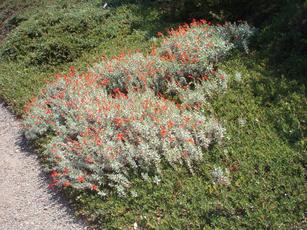 I don't have room for any new plants. Really I don't, but come spring I just can't help myself. Every pretty plant I see in a nursery or at a friend's house, I want. Admiring from afar just won't do. I rationalize that if I choose from plants that will do well in my specific environment then it's OK to add something new to the garden. If you want to be armed with a check list of possible new plants that are almost guaranteed to do well in your own neck of the woods and without a lot of water, here are some good choices.
I don't have room for any new plants. Really I don't, but come spring I just can't help myself. Every pretty plant I see in a nursery or at a friend's house, I want. Admiring from afar just won't do. I rationalize that if I choose from plants that will do well in my specific environment then it's OK to add something new to the garden. If you want to be armed with a check list of possible new plants that are almost guaranteed to do well in your own neck of the woods and without a lot of water, here are some good choices.
For those who live in the sun, consider a brilliant red California fuchsia. Hummingbirds and butterflies are both attracted to zauschneria which starts blooming in summer and continues through fall. They provide a principle nectar source for hummingbirds though the hottest, driest season. Deer aren't interested in them, either.
Ghostly Red is one of my favorites for sunny slopes although it will grow in some shade and is tolerant of many soils including alkaline, sand, clay and serpentine. The foliage is grey-green and shows off the intensely red flowers. It grows about 1-2 feet tall which is tall enough to attract the hummingbirds but low enough to be neat and tidy. Each plant can spread to 5 feet wide.
Another good variety of California fuchsia is Everett's Choice. This fast growing groundcover has dark orange-red flowers on a low, spreading plant. Furry grey foliage creeps along the ground and looks beautiful next to a path or rock wall. It's drought tolerant but will look fuller with an occasional drink after it's established. As with all California fuchsia a hard winter pruning will produce a denser plant the following year.
Consider combining either of these grey-leaved California fuchsias with the new Black Adder phormium to make a dramatic statement in your garden. Black Adder was bred from the deep, deep brown Platt's Black phormium but its color is even more striking. Deep, burgundy-black leaves have a high gloss overlay which eliminates sun fading. Black Adder is a strong and healthy grower with an upright but not stiff architectural form. When mature it reaches 3 ft tall by 3 ft wide so fits nicely into the garden.
Originally native to New Zealand, phormiums are also known as flax and their hemp-like plant fibers were traditionally used by New Zealand's Maori people to make rope, baskets and cloth.
Other good companion plants for California fuchsia are Bee's Bliss salvia, Western redbud, rockrose, buckwheat, armeria maritima, deer grass and ground morning glory. Ceanothus, rosemary and manzanita also look good with California fuchsias.
Shady gardeners ( no, I'm not making a moral judgement here ) or should I say gardeners who live in the shade or have portions of their gardens in the shade, have lots of plants to tempt them. Favorite plants for dry shade include flowering currant which is so spectacular at this time of year. This shrub blooms with huge clusters of pink, rose or white flowers. Other plants that attract hummingbirds in bright shade are Western columbine, bleeding heart, heuchera and mimulus. You can find these in a rainbow of beautiful colors these days. Humminbirds love salvia spathacea so much they're called Hummingbird flower. Also suitable for planting under oaks are Douglas iris. I love the white Pacific Coast hybrid variety, Canyon Snow. Their white flowers make an area under tall trees come alive.
A couple of new additions to the garden would be fun especially if they don't use up your water budget. With a little planning you can have color, attract wildlife and have water for the vegetable garden, too.

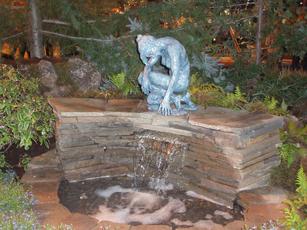
 I love those huge, showy tulips as well as the new colors of daffodil and narcissus coming out each year. Can’t live without them. But I want to add to the show next spring. Maybe I’ll plant Spring Starflower or Ipheion. Their starry white flowers bloom over a long period in spring and they naturalize easily. Spring Snowflake ( leucojum vernum ) will also naturalize in the garden. The flowers are small and bell shaped, white with a green or yellow spot and have a slight fragrance. And I want to include some species tulips. They will rebloom year after year just like they do in the wild in Europe, North Africa and Asia.
I love those huge, showy tulips as well as the new colors of daffodil and narcissus coming out each year. Can’t live without them. But I want to add to the show next spring. Maybe I’ll plant Spring Starflower or Ipheion. Their starry white flowers bloom over a long period in spring and they naturalize easily. Spring Snowflake ( leucojum vernum ) will also naturalize in the garden. The flowers are small and bell shaped, white with a green or yellow spot and have a slight fragrance. And I want to include some species tulips. They will rebloom year after year just like they do in the wild in Europe, North Africa and Asia.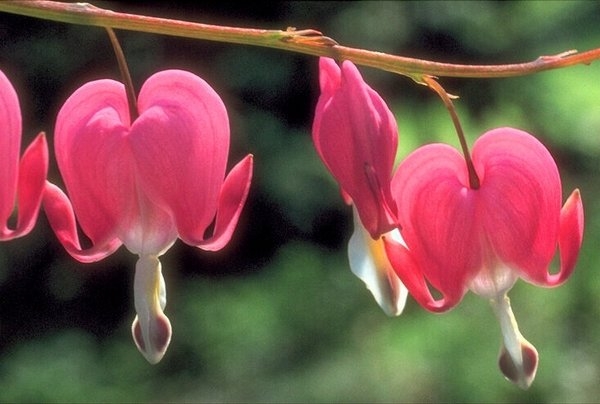 , tiny urn-shaped bells you’ve missed a spectacular sight. The flower buds form in fall and are colorful all winter then open slowly over many months. This plant sails through winter weather, hardy to 0 degrees and is scorned by deer. Even the bark is beautiful on this 5-7 ft evergreen shrub. Add a Red-leaf maple underplanted with pink and white Bleeding Hearts and pale pink Biokova geraniums and your woodland scene is complete.
, tiny urn-shaped bells you’ve missed a spectacular sight. The flower buds form in fall and are colorful all winter then open slowly over many months. This plant sails through winter weather, hardy to 0 degrees and is scorned by deer. Even the bark is beautiful on this 5-7 ft evergreen shrub. Add a Red-leaf maple underplanted with pink and white Bleeding Hearts and pale pink Biokova geraniums and your woodland scene is complete.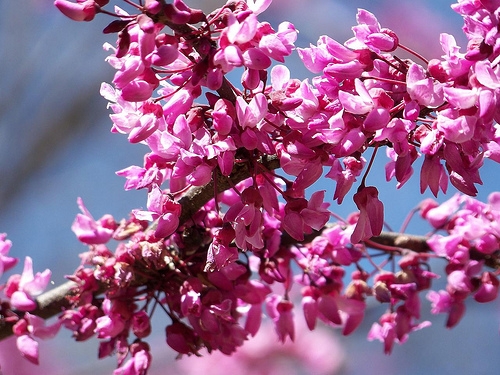 . Keep the garden simple and restful. Editing some of the plants will make the garden lower maintenance, too. Plants that have overgrown the space need constant pruning. Move them to a better spot.
. Keep the garden simple and restful. Editing some of the plants will make the garden lower maintenance, too. Plants that have overgrown the space need constant pruning. Move them to a better spot.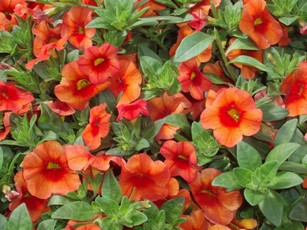 h Seeds has been developing and growing seed in Guatemala for 40 years.
h Seeds has been developing and growing seed in Guatemala for 40 years.